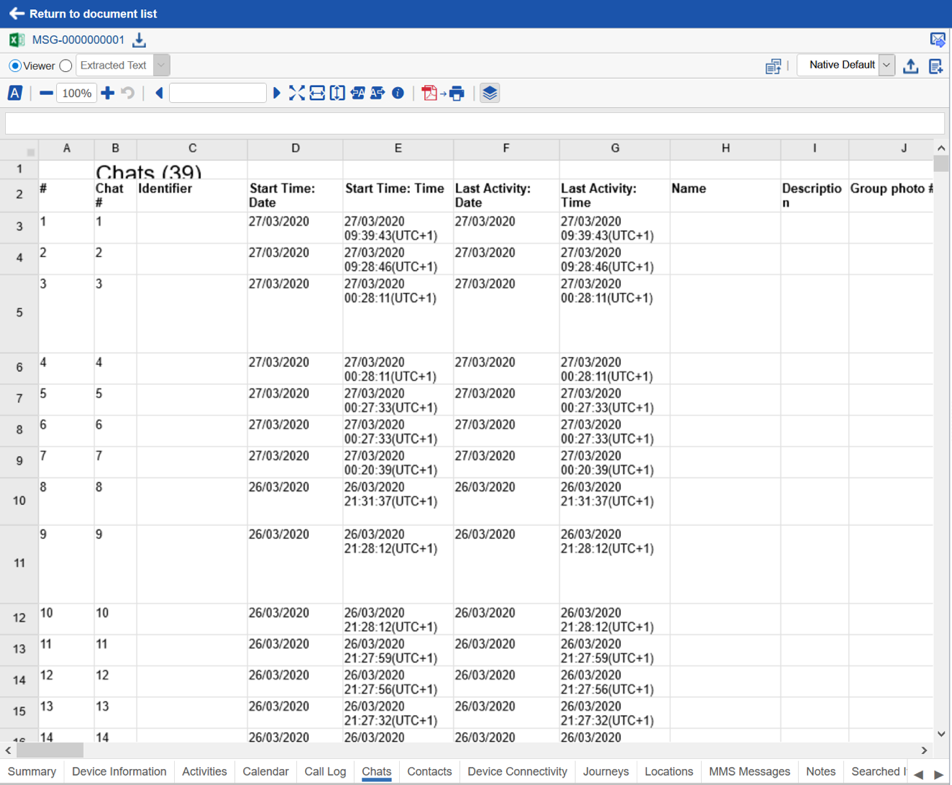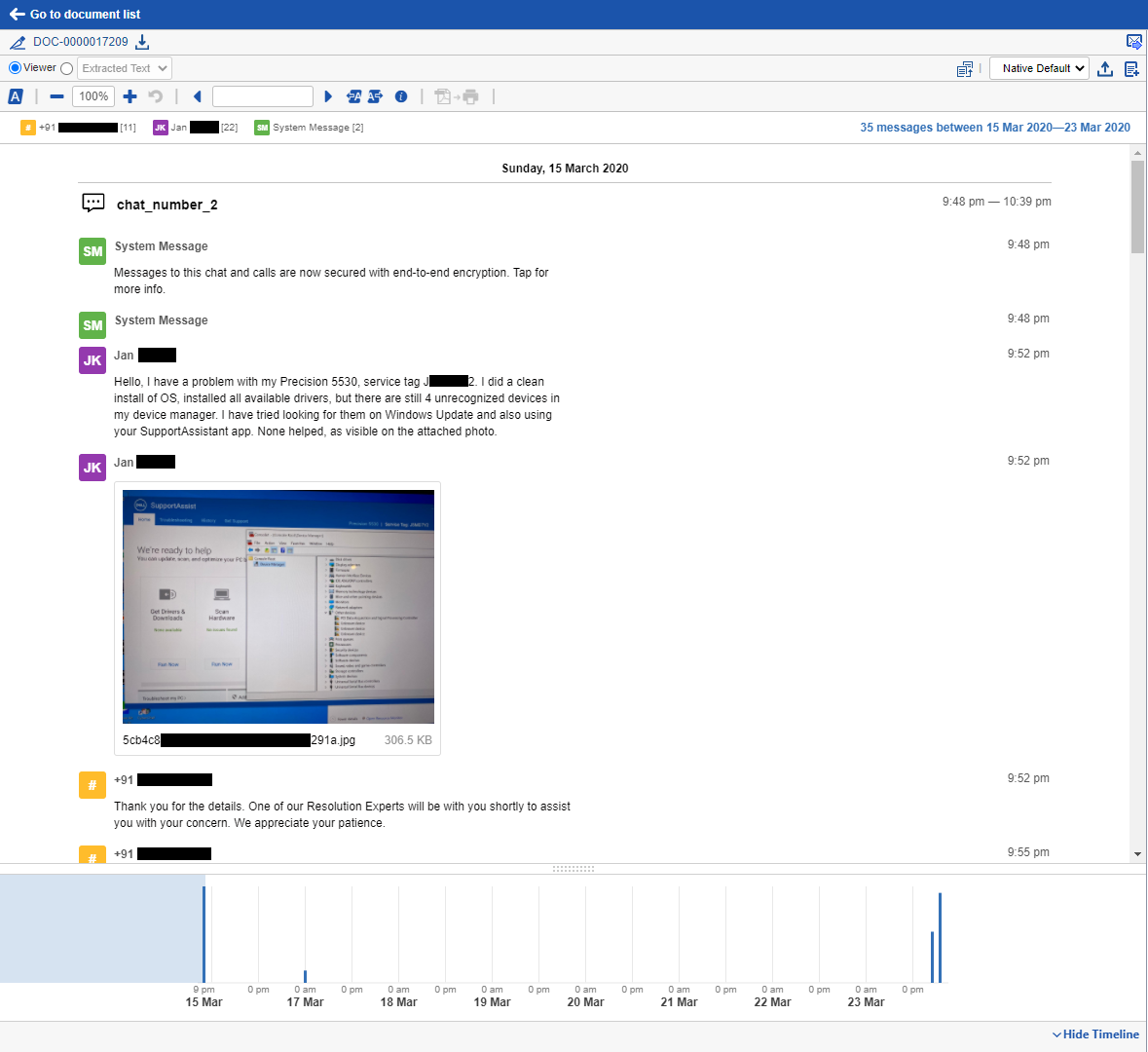Managing Informal Communications Channels in Internal Investigations
Internal investigations are time-consuming and detailed operations at the best of times. To substantiate evidence and deliver a fair and appropriate result for all stakeholders, investigators sometimes need to assess terabytes of information, often to tight deadlines.
This difficult job is made still more complex by changing workplace communication patterns. The days when emails were seen as informal notes are long gone: today, emails are regarded as a formal communications channel, and more than 40% of employees regularly use instant messaging (IM) at work. Increasingly, informal communications are now accepted as an essential business tool.
As such, investigators need to accurately analyse large amounts of informal and unstructured information at pace.
The regulatory environment
WhatsApp, Viber, Line, Slack and many other informal communications platforms have become essential vectors for teams to get work done. This means they are essential for compliance and legal teams to access and understand. Indeed, internal investigators may see informal communications as especially relevant to their enquiries, given that any improper activity may be discussed more readily away from ‘official’ channels.
There is now extensive legal precedent for informal communications being materially sensitive to investigations and potentially admissible in court. As far back as 2008 the UK’s Financial Conduct Authority (then the Financial Services Authority) stipulated that instant messaging should be included in the list of communications channels that should be retained by companies. Since 2013 the Swiss Financial Market Supervisory Authority’s Market Conduct Rules have stated that firms should retain all communications relating to securities trading, including IM sent through platforms like Bloomberg.
The US adjusted its regulations later, but the Department of Justice’s 2019 revision to the Foreign Corrupt Practices Act (FCPA) Corporate Enforcement Policy included amendments that acknowledged the importance of IM and ephemeral communications in the normal course of business.
With regulators paying closer attention to IM, compliance and legal teams must be able to promptly surface content to appropriate authorities. Being able to retain and analyse formal and informal communications data is key not only in fulfilling regulatory obligations and conducting fair internal investigations, but also in delivering potentially key evidence as rapidly as possible. Quickly understanding relevant material can make all the difference to a robust legal defence.
While most large organisations have established record-keeping and governance policies for employee communications, IM poses specific challenges. Instant and ephemeral messages are less structured than other methods of communication. Chats can feature abrupt switches in context and may continue indefinitely, making it difficult to parse text and identify relevant information.
To make matters worse, investigators usually analyse this IM data in complex spreadsheets that do not evoke the nature of specific conversations. At least, until now. A&M has developed a solution, IM Parser, that lets investigation teams analyse informal communications more quickly and accurately.
IM Parser: transforming abstract data into conversations
When assessing informal communications, context is key. Large Excel files of communications metadata (see Figure 1), the most common form of analysis in internal investigations, do not make it easy for investigators to understand the back-and-forth of specific conversations.

Using e-discovery tools in a conventional manner can only provide a small degree of additional readability and context (Figure 2):

IM Parser uses a Python script to identify relevant instant messaging conversations on Android or iOS mobile devices and converts them into files that can be imported into e-discovery software (using the latest industry standard format for reviewing chat messages). Most significantly, IM Parser leverages the e-discovery tool to replicate the conversation in a format much closer to a messaging application’s interface, providing investigators with a more intuitive way to analyse a conversation (Figure 3):

IM Parser allows users to replace anonymous identifiers with names, enabling greater comprehension of conversations and bringing informal messages closer to their original contexts.
A&M: Leadership. Action. Results.
A&M helps legal and compliance teams turn abstract textual data into understandable conversations with our bespoke IM Parser tool. IM Parser helps internal investigators quickly get to the material that matters by analysing informal communications more quickly and accurately.
For organisations seeking to increase their capability and ownership of informal communications channels, A&M’s team of forensic technology experts is already assisting clients with their e-discovery, digital forensics and investigations analytics needs.
Reach out to our key contacts below or visit A&M’s website to learn more about our Disputes and Investigations work.
Key contacts
Jerry Lay
Managing Director
Email: jlay@alvarezandmarsal.com
Phone: 0041 78 668 68 68
Pavlo Riabchuk
Senior Manager
Email: priabchuk@alvarezandmarsal.com
Phone: 0041 79 521 85 90
Petr Vacek
Senior Manager
Email: pvacek@alvarezandmarsal.com
Phone: 0041 79 875 54 60
